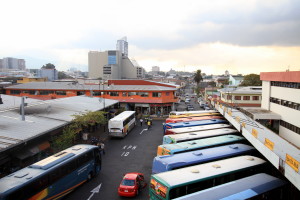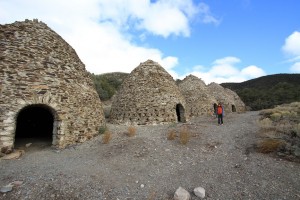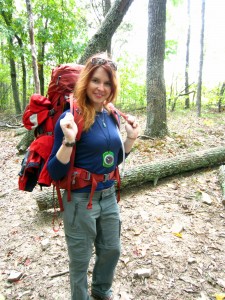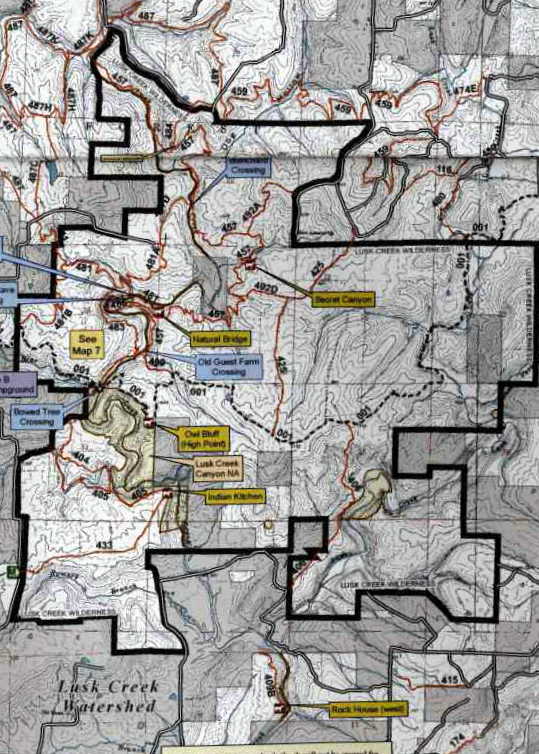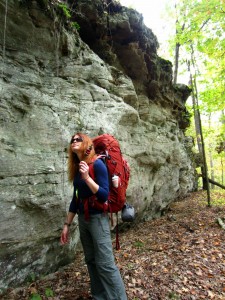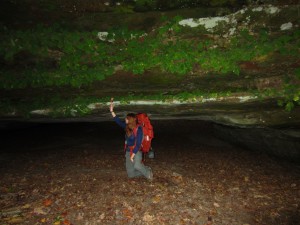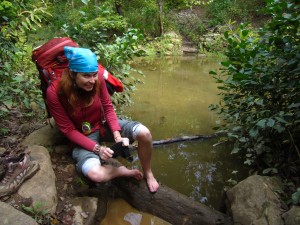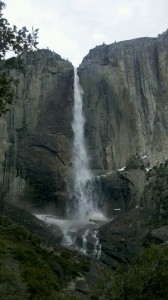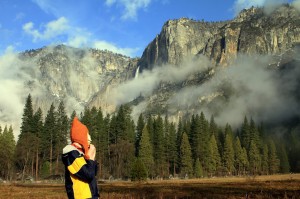As an outdoor documentary junkie, I’ve seen plenty of other people’s canyonnering adventures from the comfort of my couch. But as I braced myself against the rugged terrain in the back of a mini van on the way to Zion National Park, I realized I had no idea what I was getting myself into.
My boyfriend and I recently traveled to Zion National Park near Springdale, Utah to give this whole canyoneering thing a try. Although I consider myself an outdoor enthusiast, this was my first time navigating canyons. Although he had gone canyonnering once before in Moab, Utah, we found ourselves at a similar skill level throughout the trip.
According to Wikipedia, canyoneering is “traveling in canyons using a variety of techniques that may include other outdoor activities such as walking, scrambling, climbing, jumping, abseiling, rappelling, and/or swimming.
About a month before our trip, I contacted four guide companies to discuss their features and pricing. After weighing all of our options and our experience level, I hired Zion Rock and Mountain Guides. This guide company seemed to offer the best price for the best overall experience, and I would highly recommend them to anyone traveling to the Zion area.
They set us up with a different guide on each of the two days we booked excursions. We met a guide each morning at the company’s gear shop and loaded our gear in their mini van to take us to the best canyoneering locations. The drive out to the canyons was an adventure in and of itself. The terrain was rocky, the inclines were steep, and the cliffs were intense. Mormon communities were prevalent in the area, and one of our guides even pointed out Warren Jeff’s polygamist sect as we passed by.
Our first day in the canyons involved mostly hiking and rappelling. After a long stretch of trail, my boyfriend and I took turns harnessing ourselves to the rope and rappelling down to base level. Rappelling is essentially moving down a steep incline or past an overhang using a double rope secured above and placed around the body.
Our second day in the canyons involved more technical navigation of bouldering, stemming, and climbing. The tight crevices required us to climb over large rocks and use all four limbs to push against the sides of narrow passageways to reach the other side.
Although I did my research before our canyoneering trip, I was never able to find a good beginners’ guide to the sport. I learned a lot from “winging it” on my first experience and I can’t wait to get back out there for round two.
Lesson Learned #1: You’d better get over your fear of heights because not rappelling is not an option.
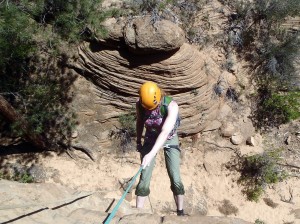
There is no getting around it. Canyoneering involves a lot of rappelling and you’d better get comfortable with it quickly. I developed my own rappelling strategy, which I defensively referred to as “slow and steady wins the race”.
Meanwhile, he zipped down the lines as quickly as possible, with the greatest of ease. Personally, I was in no hurry to get down, as long as I got down safely and without losing my cool.
Lesson Learned #2: You’re going to get soaking wet no matter how hard you try not to.
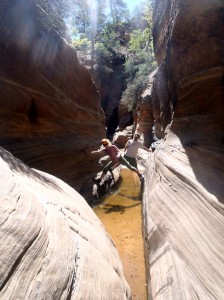
Before this trip, I was convinced that canyoneering was all about rappelling. Not true. On our first day in Zion, we hiked for about an hour before we even saw a single rope. At times, we tossed off our backpacks and bouldered across unpaved trails and flowing streams.
Just moments after this photo was taken, I lost my footing and splashed into the pit of water below me. Fortunately, it was over 90-degrees in the Utah sunshine, so drying off was a non-issue. I laughed, squeezed the water of my socks, and chocked it up to “the learning curve”.
Lesson Learned #3: The guide you have makes a huge difference.
Our guide on the second day went above and beyond to teach us the specifically skills that we would need to venture out on a canyoneering trip by ourselves, which is definitely something we are interested in doing. Although our guide on the first day was knowledgeable, he stuck to the basics and only took us to the pre-planned routes.
This just goes to show that you can do all the research you want to compare guide companies, but you never know who will be your guide and/or how well that particular guide will accommodate your needs and desires. Both of them ensured that we used proper safety techniques, which in the end, is the most important quality in a guide.
Lesson Learned #4: Proper gear is essential to not being miserable.
If you hire a guide company, such as Zion Rock & Mountain Guides, they should be able to provide all the essential gear that you will need. They provided my boyfriend and I with harnesses, helmets, and canyoneering boots. There are a few different options for canyoneering boots based on how much water you’ll be going through and how much traction you need for the rock on your trails.
On our third day in Zion National Park, we decided to do a few of hikes marked as “strenuous” in our campsite brochure. The first hike we tried was The Narrows. Our guides from the past two days raved about this hiked and casually mentioned that there would be a good amount of water included on this hike. The Narrows had well more than a “good amount of water”. It was practically hiking through a river with a moderate flow.
Somewhat unprepared for what we found, we started the hike in shorts and basic hiking boots. Other hikers around us were decked out in wetsuits, hiking sticks, and waterproof boots. The water was well below 50-degrees, the rocks were sharp and slippery on our bare feet, and the current nearly made us wipe out on several occasions.
After hiking three segments of The Narrow, we reluctantly turned around to find a trail that we were better suited for and that we could enjoy more. We ended up hiking Angel’s Landing, which was exactly what we were looking for in a strenuous hike.
Lesson Learned #5: Push yourself because you can probably do more than what’s within your comfort zone.
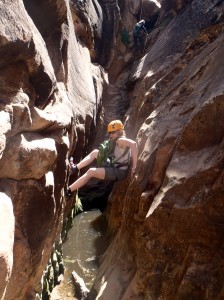
There were a couple moments on our trip that I got out of my comfort zone and completely lost my confidence. I yelled out “I can’t do it!” (with a good number of expletives thrown in) more than a few times. Neither one of our guides (or my boyfriend for that matter) would accept this. They would yell down from top of the canyon “Just do it!” and thrown in an equal number of expletives for good measure.
This photo was taken at the most difficult moment of the trip for me. The canyon walls were far apart. The water was deep and disgusting. My energy level was low and my body was exhausted. But I am happy to report that I successfully completed this route without slipping, injuring myself, or falling into a pit of sludge.
I tend to think that my mind and body have certain limitations, but those limitations can often be pushed further when situations require it. Canyoneering made me realize this about myself and boosted my confidence that I can do much more, both physically and mentally, than I really expect myself to. Needless to say, this will not be my last canyoneering trip and I will always remember what I learned from my first experience in Zion.
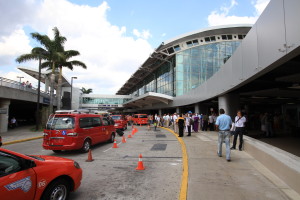 My boyfriend’s head didn’t explode and my Customs form wasn’t rejected. A wave of relief swept over me as I took the first steps out of the airport in San José, Costa Rica.
My boyfriend’s head didn’t explode and my Customs form wasn’t rejected. A wave of relief swept over me as I took the first steps out of the airport in San José, Costa Rica.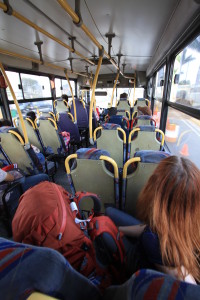 Sinus infections and flight chaos were the last things on my mind as I felt the 85-degree heat smack me in the face. I quickly thought and forgot about all those suckers back in negative 85-degree Chicago.
Sinus infections and flight chaos were the last things on my mind as I felt the 85-degree heat smack me in the face. I quickly thought and forgot about all those suckers back in negative 85-degree Chicago.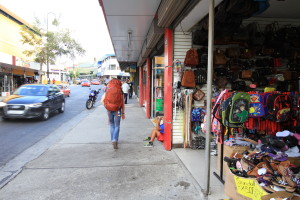 Utilizing broken Spanish language skills, we quickly found the correct bus stop and hopped on board. Apparently, buses are THE way to get around in San José. They felt clean and safe, and there was a ton of them going in all directions throughout the city. The best part was that a bus ride only cost about $1 USD!
Utilizing broken Spanish language skills, we quickly found the correct bus stop and hopped on board. Apparently, buses are THE way to get around in San José. They felt clean and safe, and there was a ton of them going in all directions throughout the city. The best part was that a bus ride only cost about $1 USD!
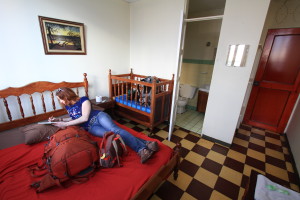 When we arrived at Hotel Musoc in the early afternoon, we were told that the electricity was out in the whole neighborhood. The hostel owner held a flashlight over his daughter’s head while she checked our passports and took our money.
When we arrived at Hotel Musoc in the early afternoon, we were told that the electricity was out in the whole neighborhood. The hostel owner held a flashlight over his daughter’s head while she checked our passports and took our money.